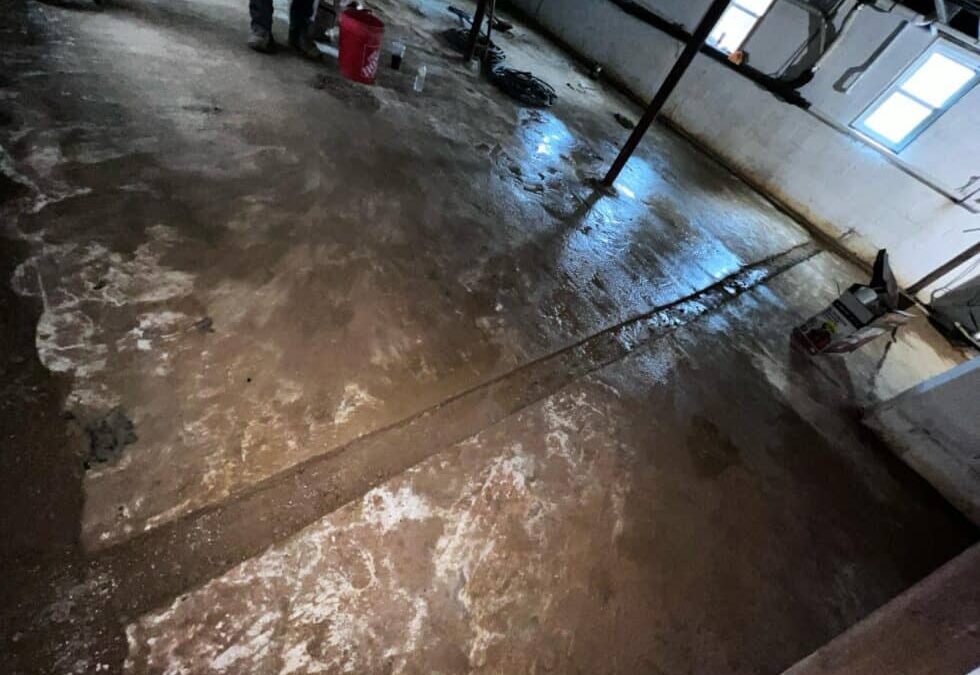When a Drainage System in a House Is a Good Idea
Installing a drainage system in a house isn’t just a preventative measure—it’s an essential investment in maintaining your home’s structural integrity, air quality, and overall value. Excessive water accumulation around or inside your property can lead to costly damage, mold growth, and even compromised foundations. A properly designed drainage system ensures that water is efficiently directed away from your home, protecting it from harm caused by water intrusion.
In this blog, we aim to educate homeowners on the importance of a drainage system in a house. From identifying the warning signs to exploring the best solutions, you’ll find everything you need to make informed decisions right here. Safeguarding your property starts with knowing when drainage systems are necessary and how they can save you from future headaches.
Signs You Need a Drainage System in a House
Water-related issues don’t just appear overnight—they often leave telltale signs that are hard to ignore. Here’s what to look for:
- Persistent Water in Basement: Does water pool in your basement after it rains? This is a common indicator that water isn’t draining properly, putting your foundation at risk.
- Cracks in Foundation Walls: Persistent water exposure often leads to visible cracks, compromising your home’s structural stability. Foundation drainage solutions can address and prevent further damage.
- Mold or Mildew in Crawl Spaces: Damp crawl spaces are prime environments for mold growth, which can affect your home’s air quality and lead to health issues. Crawl space drainage is essential to eliminate moisture and prevent mold problems.
- Water Pooling Around the Property: If water consistently collects near your foundation, it’s a red flag that a drainage system in a house is overdue. This can lead to erosion and increased hydrostatic pressure on your foundation.
- Sticking Doors and Windows: Excess moisture in the soil can cause your foundation to shift, leading to warped or misaligned doors and windows.
By recognizing these signs early and implementing foundation or crawl space drainage solutions, you can protect your home from escalating problems.
How Water Can Damage Your Foundation
Water is deceptively destructive when it comes to your foundation. Concrete, while strong, is naturally porous, allowing water to seep in and create long-term damage. Here’s how this happens:
- Wicklike Action: Water can infiltrate through tiny capillaries in the concrete, a process known as capillary action. Over time, this moisture buildup weakens the foundation, leading to cracks and instability.
- Freeze-Thaw Cycles: In colder climates, water that has seeped into the concrete can freeze and expand during low temperatures, exerting pressure on the material. This freeze-thaw cycle causes the concrete to crack and deteriorate further over time.
- Erosion and Hydrostatic Pressure: Water pooling around the foundation increases hydrostatic pressure on the structure, pushing against the concrete and exacerbating existing weaknesses. Over time, this can lead to significant structural damage.
Protecting your foundation with a drainage system prevents water intrusion, safeguards against freeze-thaw cycles, and ensures long-term stability for your home.
Benefits of Installing a Drainage System in a House
From safeguarding your foundation to maintaining a dry basement, installing a drainage system in a house offers undeniable peace of mind. Proper drainage systems work to protect your home, prevent costly water damage, and even enhance your property’s overall value.
Here are three key benefits:
- Foundation Protection: Excess water around your foundation can lead to foundation cracks, settlement, and structural instability. By utilizing exterior drainage systems, you can redirect water away from your home, preserving your foundation’s strength and integrity.
- Basement Waterproofing: Installing a drainage system prevents water from seeping into your basement, protecting it from flooding, mold growth, and damage to stored belongings. A well-maintained basement not only adds livable space but also contributes to your home’s long-term value.
- Improved Air Quality: Moisture and mold in crawl spaces or basements can lower indoor air quality, leading to health concerns. Drainage systems eliminate excess moisture, creating a healthier living environment.
Do I Need An Interior or Exterior Drainage System?
Both interior and exterior drainage systems are important components of a comprehensive water management strategy for your home. Especially if you get frequent flooding in your area.
Here’s how they both work:
- Interior Systems: Sump pumps and perimeter French drains inside the basement collect and direct water that has entered, ensuring a dry, safe living space.
- Exterior Systems: Exterior French drains and grading techniques divert water away from the home, maintaining soil stability and reducing pressure on the foundation.
Final Thoughts: Protect Your Home With a Drainage System
Water damage isn’t just an inconvenience—it’s a threat to your home’s foundation, air quality, and overall safety. Installing a drainage system in a house is one of the smartest investments homeowners can make to prevent costly repairs, mold growth, and structural instability. Whether it’s addressing water pooling around your property or ensuring your basement remains dry and livable, a reliable drainage solution safeguards what matters most: your home and your peace of mind.
Don’t Wait Until Water Damage Escalates: Contact Zavza Seal for Proven, Long-Lasting Waterproofing Solutions in Long Island, Brooklyn, Queens, and The Bronx!
Call (631)980-1800 Now!








